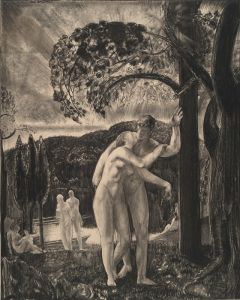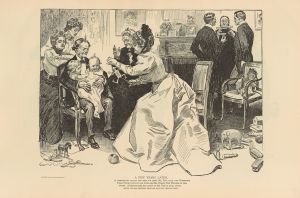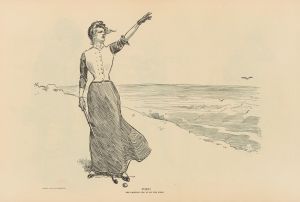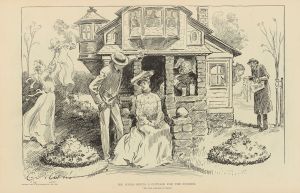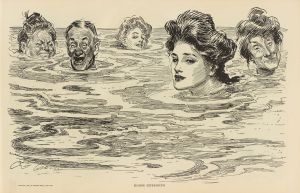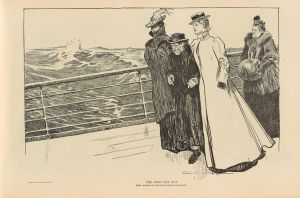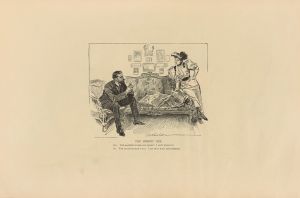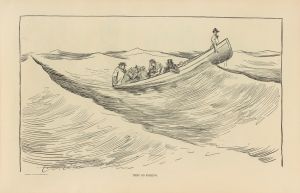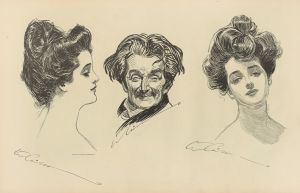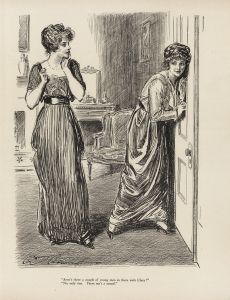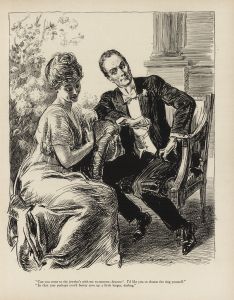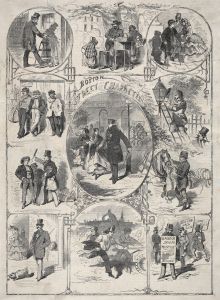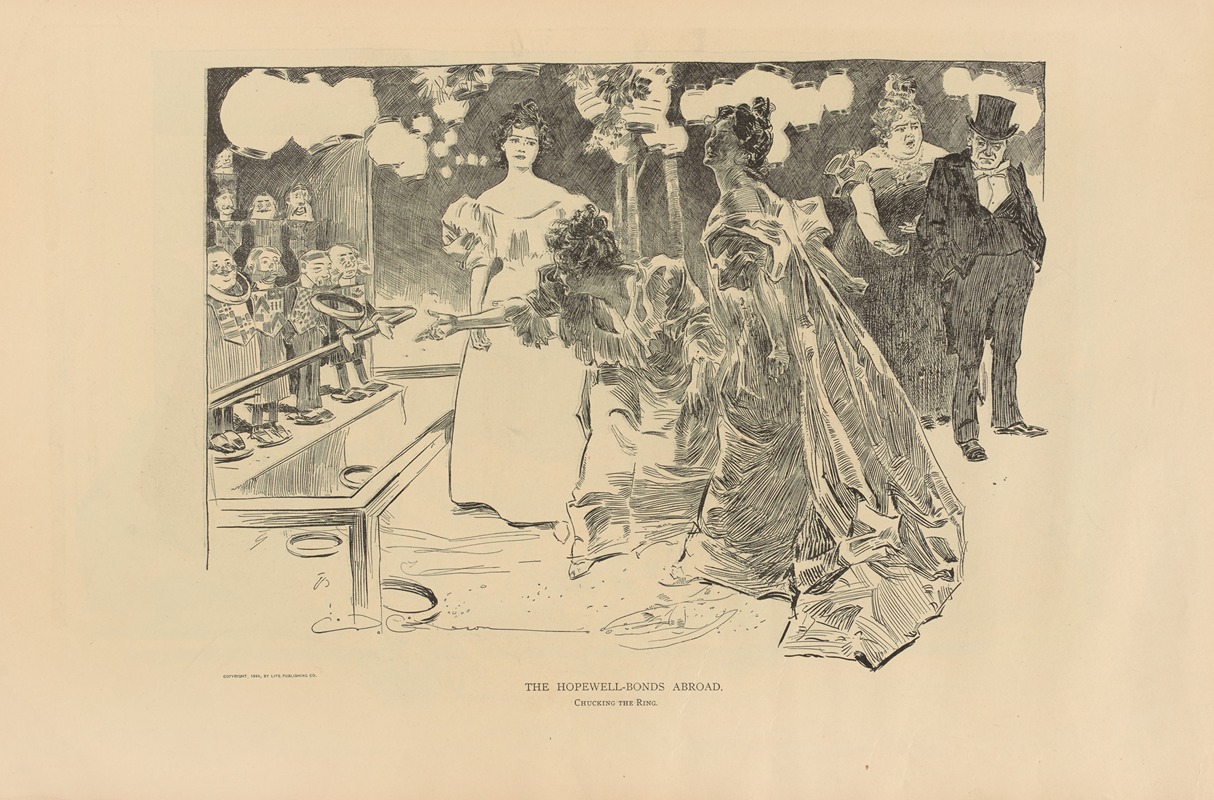
The Hopewell-Bonds abroad
A hand-painted replica of Charles Dana Gibson’s masterpiece The Hopewell-Bonds abroad, meticulously crafted by professional artists to capture the true essence of the original. Each piece is created with museum-quality canvas and rare mineral pigments, carefully painted by experienced artists with delicate brushstrokes and rich, layered colors to perfectly recreate the texture of the original artwork. Unlike machine-printed reproductions, this hand-painted version brings the painting to life, infused with the artist’s emotions and skill in every stroke. Whether for personal collection or home decoration, it instantly elevates the artistic atmosphere of any space.
Charles Dana Gibson was an influential American illustrator, best known for his creation of the "Gibson Girl," a representation of the idealized American woman at the turn of the 20th century. His illustrations captured the spirit of the era and were widely published in magazines such as Life, Harper's Weekly, and Scribner's. Among his many works, "The Hopewell-Bonds Abroad" stands out as a notable piece, although specific details about this particular illustration are scarce.
"The Hopewell-Bonds Abroad" is one of Gibson's illustrations that likely reflects his characteristic style, which often combined humor, social commentary, and a keen observation of the social dynamics of his time. Gibson's works frequently depicted the leisure class, focusing on themes of romance, social status, and the interactions between men and women. His illustrations were known for their detailed line work and the expressive faces of his characters, which conveyed a range of emotions and social nuances.
While there is limited specific information available about "The Hopewell-Bonds Abroad," it can be inferred that the illustration might explore themes similar to those in Gibson's other works. His illustrations often portrayed affluent American families and individuals traveling or engaging in social activities, reflecting the growing American interest in European culture and travel during the late 19th and early 20th centuries. This period saw an increase in transatlantic travel among the American upper class, who sought to experience the cultural and social life of Europe.
Gibson's work, including "The Hopewell-Bonds Abroad," was part of a broader cultural movement that documented and sometimes satirized the lifestyles of the wealthy. His illustrations provided a window into the aspirations and behaviors of the American elite, often highlighting the contrasts between American and European customs. Through his art, Gibson contributed to the dialogue about American identity and its place in the world, particularly in relation to Europe.
Despite the lack of detailed information about "The Hopewell-Bonds Abroad," it is clear that Charles Dana Gibson's work had a significant impact on American art and culture. His illustrations not only entertained but also offered a critique of the social norms and expectations of his time. Gibson's legacy endures through his iconic depictions of the "Gibson Girl" and his insightful portrayals of early 20th-century society.
In summary, while specific details about "The Hopewell-Bonds Abroad" are not readily available, the illustration is likely representative of Charles Dana Gibson's broader body of work, which captured the essence of American society during a transformative period in history. His art remains a valuable resource for understanding the cultural and social dynamics of the era.





